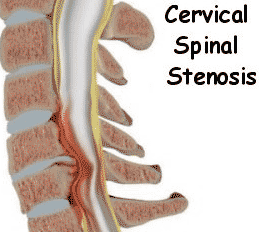Symptoms of spinal stenosis
In the population of our country, cervical canal stenosis is more common in middle-aged and elderly people over 40 years old. It usually belongs to an invisible chronic onset of illness, and the incidence rate shows an increasing trend. Cervical canal stenosis has a hidden onset and develops relatively slowly. Many patients experience symptoms or worsening symptoms after trauma or repeated minor injuries. The symptoms of cervical canal stenosis are diverse, including pain, weakness, and limb spasms. Some patients may experience sudden, brief electric shock-like sensations that spread downward when extending their necks. The main symptoms of cervical canal stenosis include numbness in the limbs, skin allergies, or sensory dissociation, which are mainly due to involvement of the spinothalamic tract and other sensory nerve fiber bundles.
1. Sensory disturbance
More than 90% of cases of cervical canal stenosis present with this group of symptoms.
The main manifestations include numbness in the limbs, skin allergies, or sensory dissociation, which are mainly due to involvement of the spinothalamic tract and other sensory nerve fiber bundles.
2. Motor disturbance
These symptoms generally appear several weeks or months after sensory disturbances, and most are discovered during examination. The main manifestations include patients starting with heavy gait, lower limb weakness, difficulty lifting steps, prone to kneeling down, and a sensation of tightness around the chest or abdomen. As the disease progresses, the symptoms worsen until complete paralysis occurs.
3. Muscle atrophy
In cases of simple developmental cervical canal stenosis, muscle atrophy generally appears later compared to pure myelopathic cervical spondylosis. However, when combined with myelopathic cervical spondylosis, this group of symptoms not only appears earlier but also tends to be more severe and widespread. The reason is mainly due to the multi-segmental nature of developmental cervical canal stenosis. Therefore, once various additional factors lead to spinal cord involvement, it often affects multiple segments simultaneously. During examination, the affected level generally does not exceed the neurological distribution area of the highest segment of developmental cervical canal stenosis.
